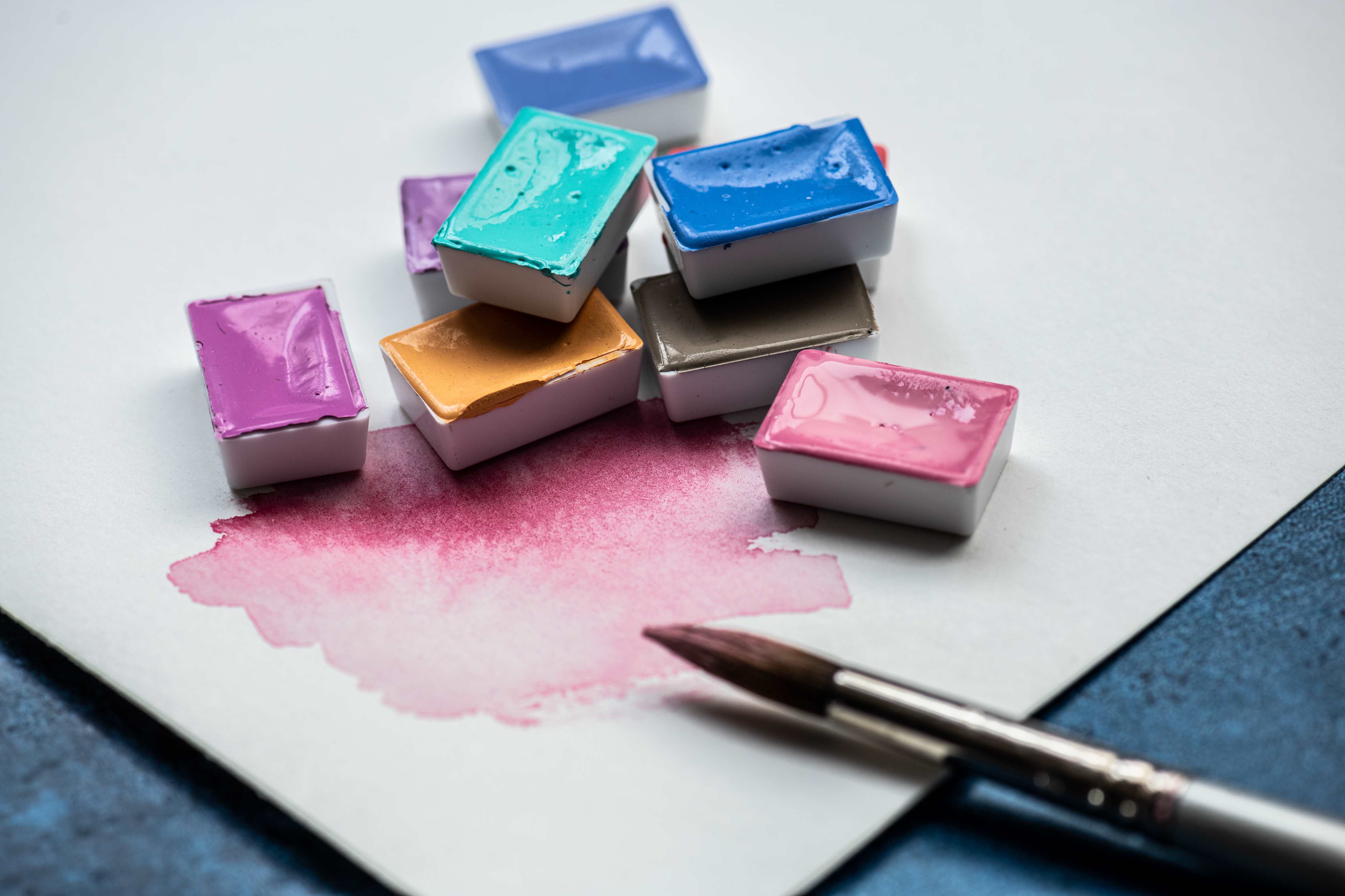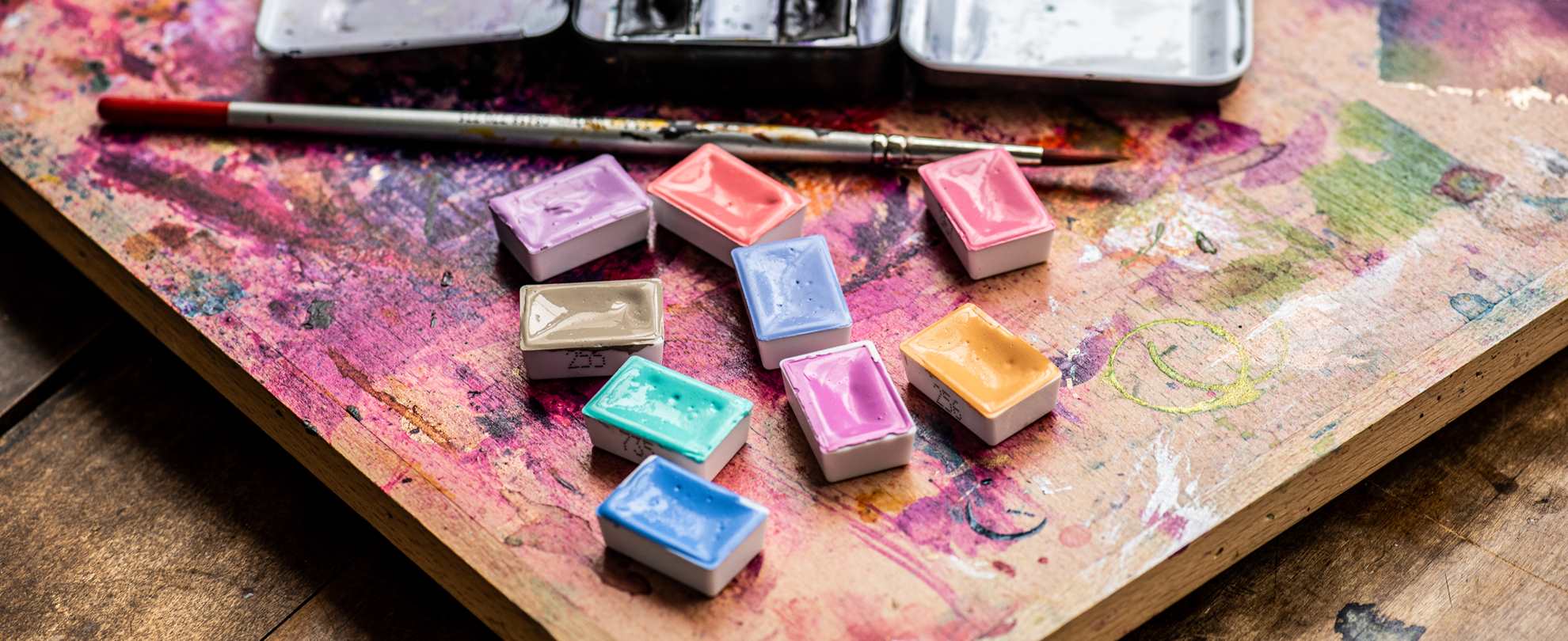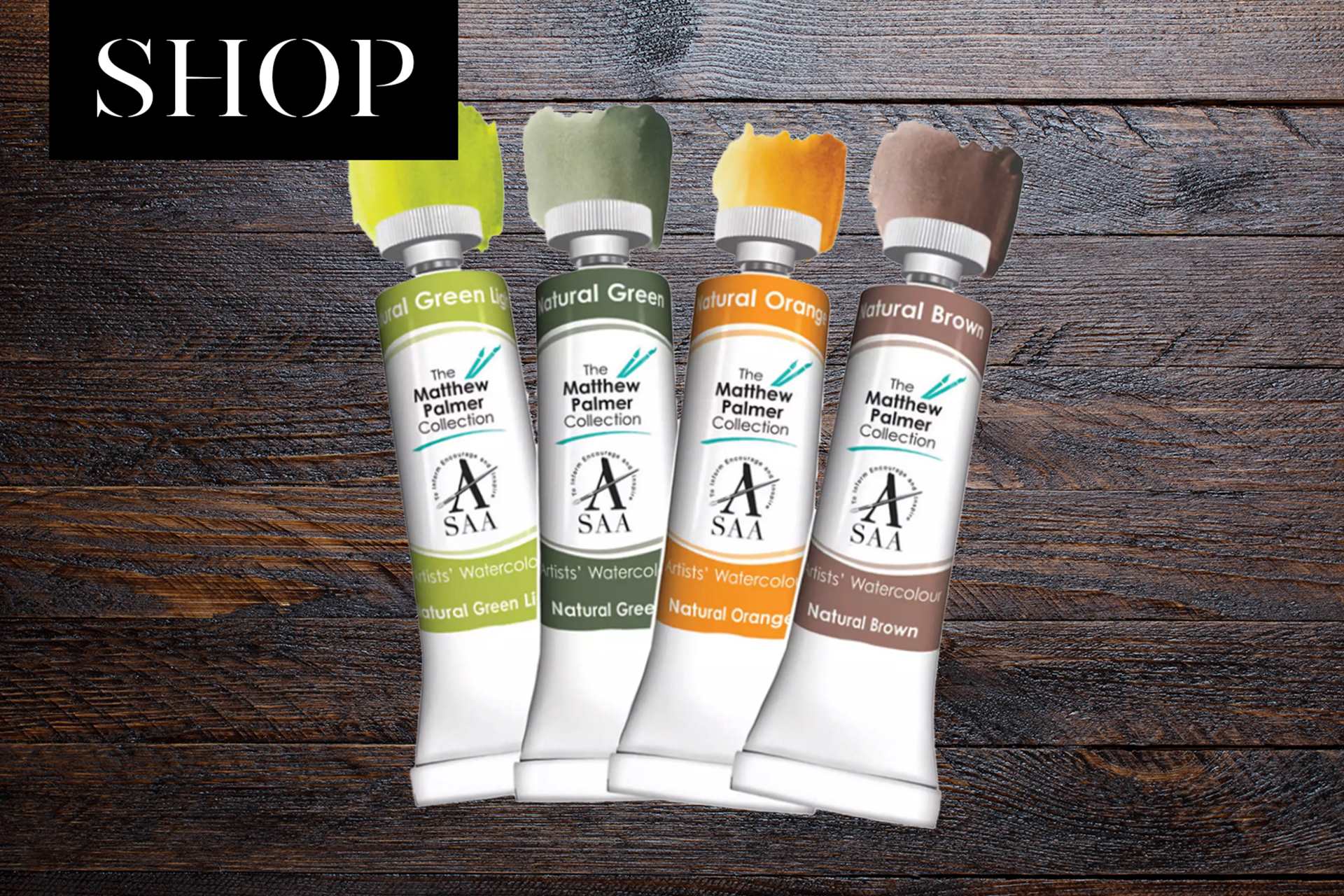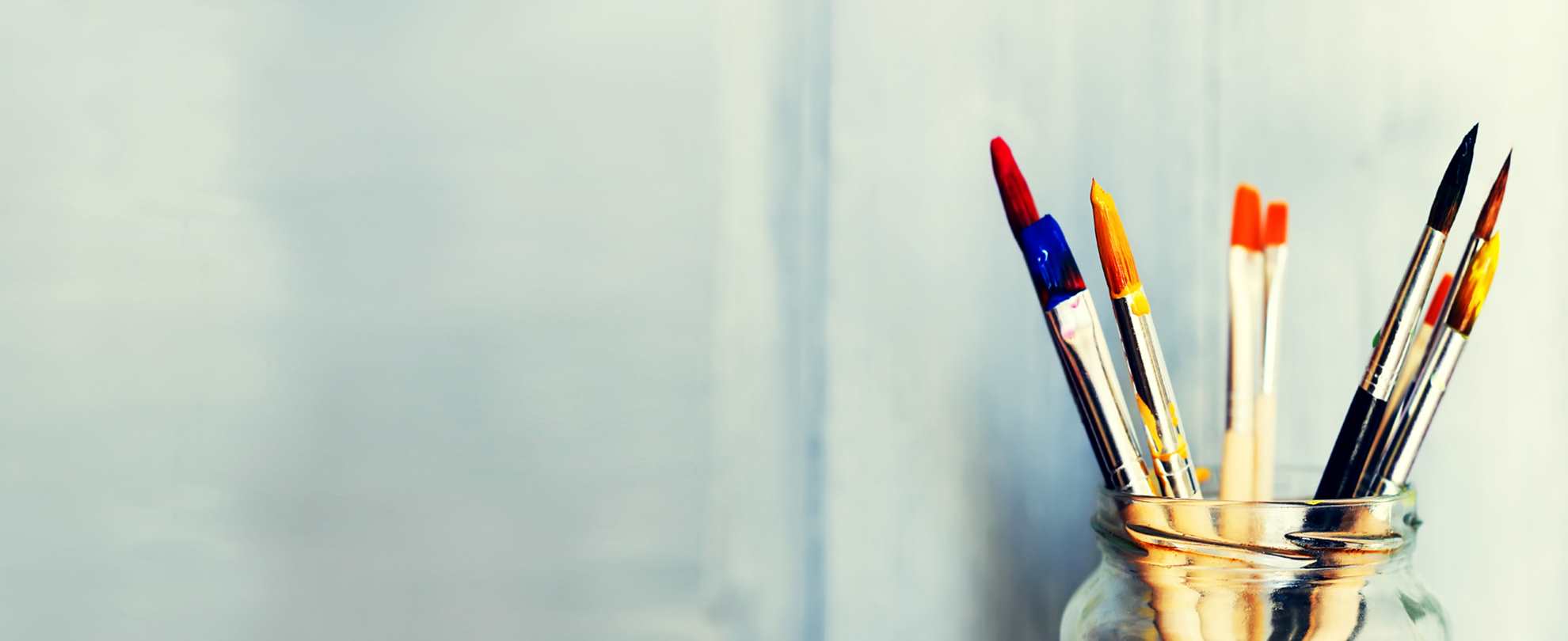

What's the difference? Pans
It is a personal choice as to which format you like to use for your watercolour paintings. You can use either tubes or pans exclusively or mix and match depending on what works best for you. Paint in tubes offers a stronger concentration of colour enabling you to work quickly and are ideal for large areas. Pans are convenient and perfect for travelling, as you can choose your favourite colours and place them into a small travel pan palette box ready for use.

What's the difference? Tubes
Paints in the tubes are designed to be used fresh and offer a creamy paint straight from the tube. The consistency will vary with different pigments and brands but on the whole, the paint needs to be squeezed out of the tube and can be used as an undiluted rich colour or add water for the traditional diluted and soft colour layers. Small amounts can be squeezed out onto a palette and used while the paint is still wet but there is little waste when using watercolours as you can let the paint dry on the palette and reactivate when you require. Artists' Watercolours are usually supplied in metal tubes and the most popular sizes are 5ml and 14 /15ml.

How are Pans manufactured?
Watercolour pans typically are found in half pans (approx.19x15x8mm) and full or whole pans (approx.30x19x10mm), some companies do more bespoke sizes but most of the main manufacturers do full and half pans. There are some slight variations on size but on the whole, the sizes from different companies are very similar.
The manufacturing process can be different depending on the brand of paint. Some are baked into sheets, cut, and then glued into the pans - this creates a hard paint that is reactivated with water. Other paint pans are poured as a fluid paint and allowed to dry between layers, these are called moist pans and some colours will remain a little tacky as this is the nature of the pigment. A damp brush can be used to activate dried watercolours or pans or add a little water to pre-wet the colours for a faster brush load of colour.

Make your own
You can make your own pans by squeezing some paint from a tube into an empty pan. This is ideal for making your own travelling sets with colours you use rather than purchasing a pre-made set. You may find that some pigments will dry differently to others. This is because pre-made pans often have a different formulation to the tubes, depending on the manufacturer. Some tube colours have an additional wetting agent to keep them fresh inside the tube, which can prevent some colours from fully drying in a pan or on the palette and they will remain sticky.
Over drying and cracking, not evenly levelling in the pan or separation from the binder can also occur. It is good practice to test with little dots of colour on a plastic surface to see which colours dry as you need them to for travel. None of this should affect the rewetting properties of the paint but it is important you are aware that there are differences.





